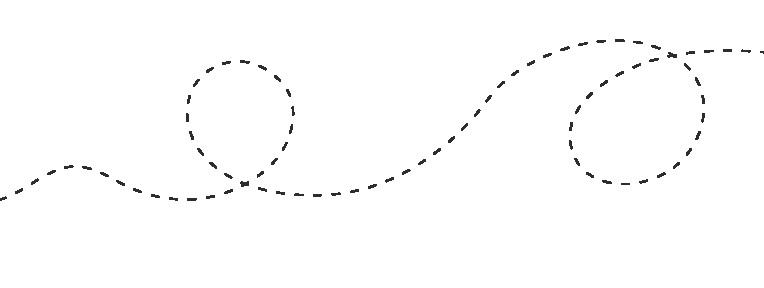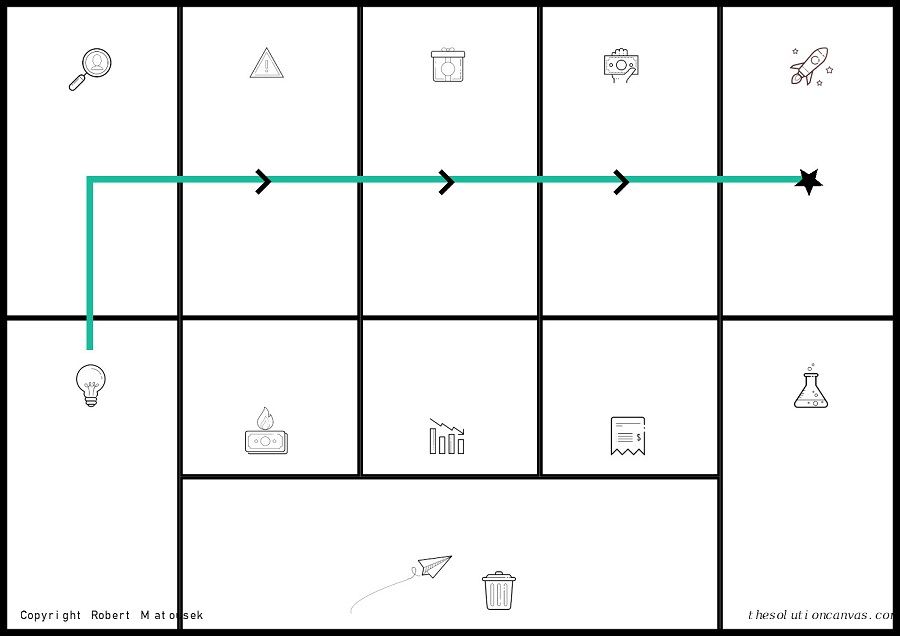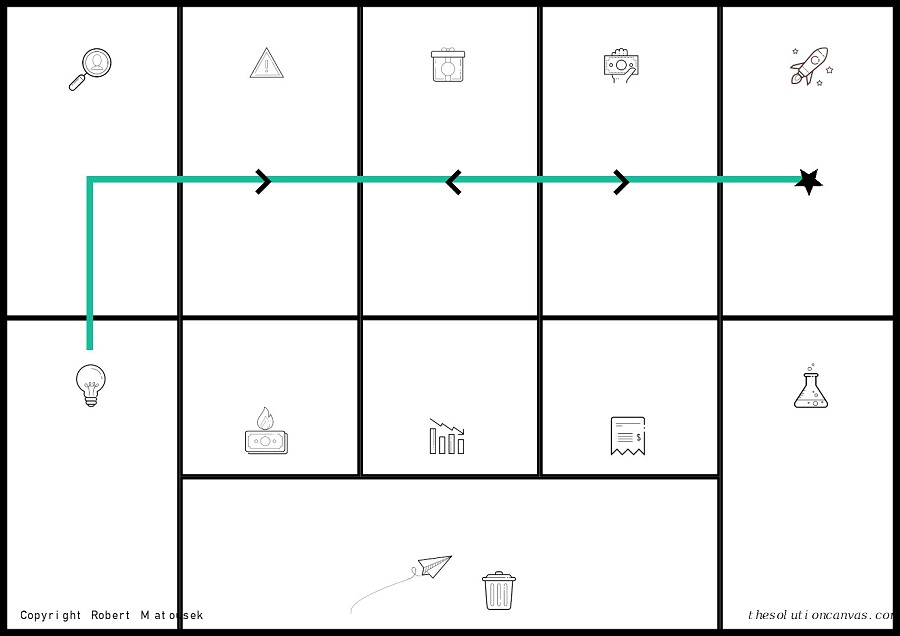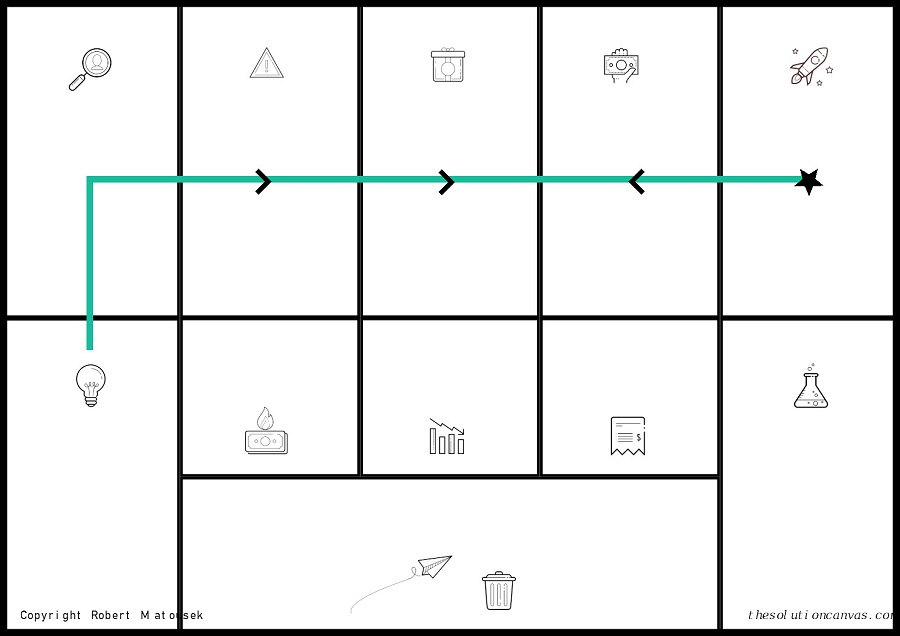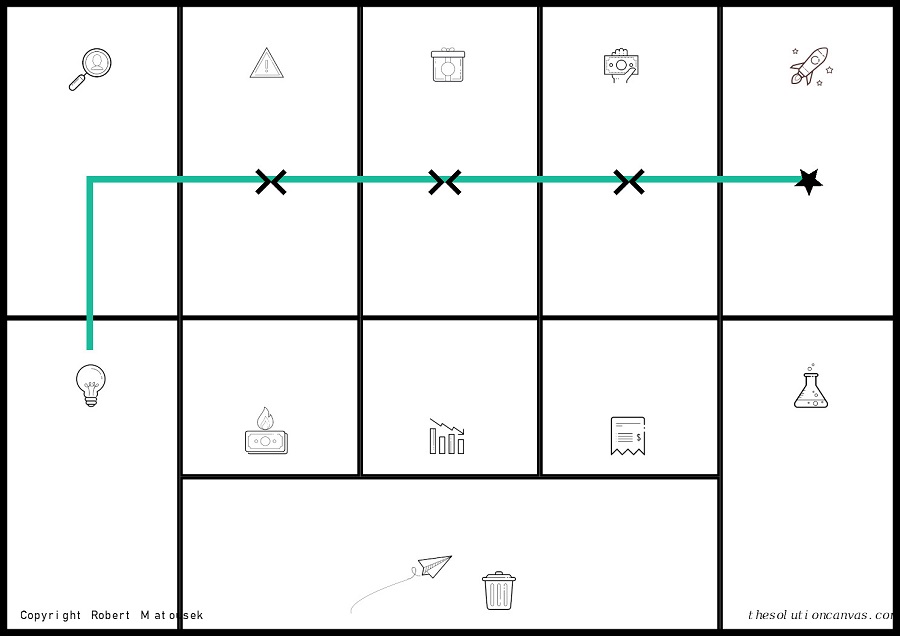What are they?
We discovered several patterns of innovation that occur frequently in the search for new business models. Each pattern highlights a different route on the solution canvas and represents a systematic way in which organizations try to tackle innovation.
We typically visualize this journey as a linear process consisting of 3 consecutive phases (e.g. problem-fit, solution-fit, market-fit). See for example the PACE method or Innovation Roadmap used by ING and Rabobank. However innovation follows a non-linear patterns across social, technical and economical domains. Most organizations do not progress through these stages in a step-wise manner and allocate resources to innovation to achieve various types of fit at different phases of the product life-cycle.
